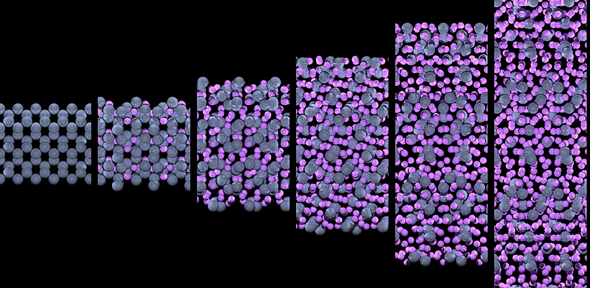
Submitted by Dr Nalin Patel on Tue, 04/02/2014 - 14:21
Researchers have used in situ NMR combined with density-functional theory calculations to provide insights on the kinetics of lithiation and delithiation in high capacity Si-anode based lithium-ion batteries
Using a combination of nanotechnology and nuclear magnetic resonance (NMR) techniques, researchers have developed a new probing system that gives a view into what is happening inside the batteries at the atomic level, enabling greater control over the properties of the materials.
Silicon has been proposed as a replacement for carbon in battery anodes (negative electrodes) for the past 20 years, as it has roughly ten times more storage capacity than carbon. However, difficulty in managing silicon’s properties has prevented the technology from being applied at scale.
The primary problem with using silicon in a lithium-ion battery is that silicon atoms absorb lithium atoms, and the silicon expands up to three times in volume, degrading the battery. Although controlling this expansion has become easier over the past decade, a lack of understanding about what is happening inside the batteries and what governs the reactions have continued to hold silicon batteries back.
Researchers at the University of Cambridge have developed a new method to probe silicon batteries and determined what causes the expansion to take place. The results are reported in the 3 February edition of the journal Nature Communications.
Using these combined techniques, the researchers were able to develop a ‘map’ of how silicon transforms when it is put into contact with lithium in a battery. The insights opened up by the technology will boost further developments of silicon batteries, as it will be easier for engineers to control their properties.
Dr Andrew Morris, a Winton Advanced Research Fellow, performed the DFT calculations, with the experimental work led by Dr Ken Ogata with collaborators in the departments of Engineering, Chemistry and Material Science and Metallurgy.
Details can also be found on the University Research website.

